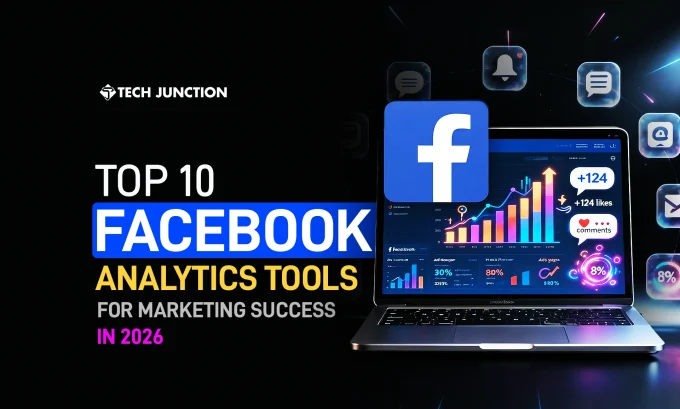Ever feel like your business is running on twelve apps, three spreadsheets, and one person’s memory? You are not imagining things; it is happening. In the rush to “go digital,” many businesses have ended up with patchwork systems that cause more confusion than clarity. Everyone wants to be more efficient, but few know what that really looks like in practice. In this blog, we will share the real impact of streamlined tech processes on business growth.
Why Efficiency Is the New Competitive Edge
In today’s market, speed alone doesn’t win anymore. Precision, coordination, and adaptability are just as critical—and they’re much harder to fake. Businesses face higher customer expectations, tighter margins, and faster product cycles, and the pressure to deliver more with less is constant. That’s where streamlined tech processes move from buzzword to necessity.
The post-pandemic shift toward automation, cloud adoption, and remote collaboration forced companies to re-examine their operational backbone. Many discovered that their internal workflows were filled with manual tasks, outdated tools, and overlapping responsibilities. In a world where customer satisfaction is measured in hours, not days, inefficiency is more than an annoyance. It is a liability.
Consider the rise of advanced manufacturing and precision-based production. As operations grow more interconnected, clarity becomes a form of currency. And in these environments, structured and repeatable guidance can dramatically cut error rates. This is where tools like work instructions software come into play. By giving workers access to clear, step-by-step instructions, businesses reduce variability and maintain high standards at scale. It’s not just about documentation, it’s about keeping people aligned without micromanaging every movement.
For industries like electronics, aerospace, or automotive, this kind of consistency isn’t optional. A single error can lead to product failures, safety risks, or regulatory violations. Clear work instructions help operators complete tasks efficiently while also supporting traceability and compliance, both of which are now central to growth in quality-driven sectors.
Making Time for What Actually Grows the Business
Streamlined tech processes aren’t just about doing things faster. They’re about making space for higher-value work. Think about how much time gets lost in task-switching, status updates, and fixing things that weren’t done correctly the first time. Automation tools, centralized data systems, and digital workflows remove those pain points—not by eliminating people, but by removing friction from their work.
When a team doesn’t have to dig through multiple platforms to find a single answer or spend half a day preparing a manual report, they can actually focus on product development, customer engagement, or strategic planning. These are the areas that drive growth. They’re also the areas that tend to get crowded out when operations are disorganized.
It’s also worth noting how today’s workforce is shifting. Employees want tools that work with them, not against them. They expect systems that make their jobs easier, not more complicated. Businesses that streamline tech processes signal that they value their team’s time and contribution. That goes a long way in retaining talent, which is another often-overlooked driver of long-term growth.
Reducing Risk Without Slowing Down
Risk management isn’t just about protecting yourself from disaster. It’s about making smart decisions in real time. And when your systems are clunky or disconnected, that gets harder to do. Data silos delay response times. Inconsistent processes introduce gaps in quality. And a lack of visibility can mean small problems snowball before anyone even knows they exist.
Streamlined tech processes help reduce these risks by making critical information more accessible, automating routine checks, and allowing for proactive monitoring. For example, in sectors like food production or healthcare, digitized logs and alerts can detect process deviations early, often before they reach the customer. In software development, continuous integration systems catch errors faster, allowing teams to course-correct in real time.
None of this is about playing defense. It’s about building a framework where quality and speed can coexist. Businesses that do this well can ship faster without cutting corners, and adapt to change without rewriting their entire operations.
Flexibility That Fuels Growth, Not Chaos
When people talk about being “agile,” they often mean they’re in a constant state of reactive problem-solving. But real agility—the kind that leads to sustainable growth—comes from having streamlined systems that flex without falling apart.
Take inventory management. A business that relies on manual stock counts or separate spreadsheets for each location can’t respond quickly to a supply chain disruption. But a business with integrated systems that track materials in real time can pivot within hours, reroute deliveries, or even adjust production without halting operations.
Or look at customer onboarding. A clunky, multi-step setup process can tank conversion rates, no matter how great the product is. But when your internal processes are smooth—automated emails, digital forms, real-time status tracking—you create a better customer experience that leads to repeat business and referrals.
Flexibility doesn’t mean chaos. It means building systems that are strong enough to bend. And technology is what makes that possible on a scale that manual processes never could.
The Cost of Doing Nothing
Some businesses delay streamlining because change feels expensive. And yes, implementing better systems takes time, money, and focus. But the cost of doing nothing adds up fast. Every minute wasted on duplicate tasks, every customer lost to a late response, every employee frustrated by bad tools—that’s real money leaving your business quietly.
In a competitive market, the businesses that win are the ones that operate with intention. They’re not just working harder—they’re working smarter. They’re trimming what doesn’t work, investing in what does, and building a tech foundation that supports their vision without dragging it down.
The truth is, streamlined tech processes are not a one-time project. It is a mindset. It means regularly evaluating your workflows, asking hard questions, and being willing to let go of habits that no longer serve your goals. Businesses that adopt this mindset grow faster, fail less dramatically, and adapt more easily to the unknowns ahead.
Streamlined tech processes aren’t a luxury anymore. They’re part of the basic toolkit for any business trying to scale, survive, or simply stay sane in an economy that rewards clarity over clutter. When your systems run clean, your people can run faster—and that’s the kind of growth that sticks.
The Tech Junction is the ultimate hub for all things technology. Whether you’re a tech enthusiast or simply curious about the ever-evolving world of technology, this is your go-to portal.















